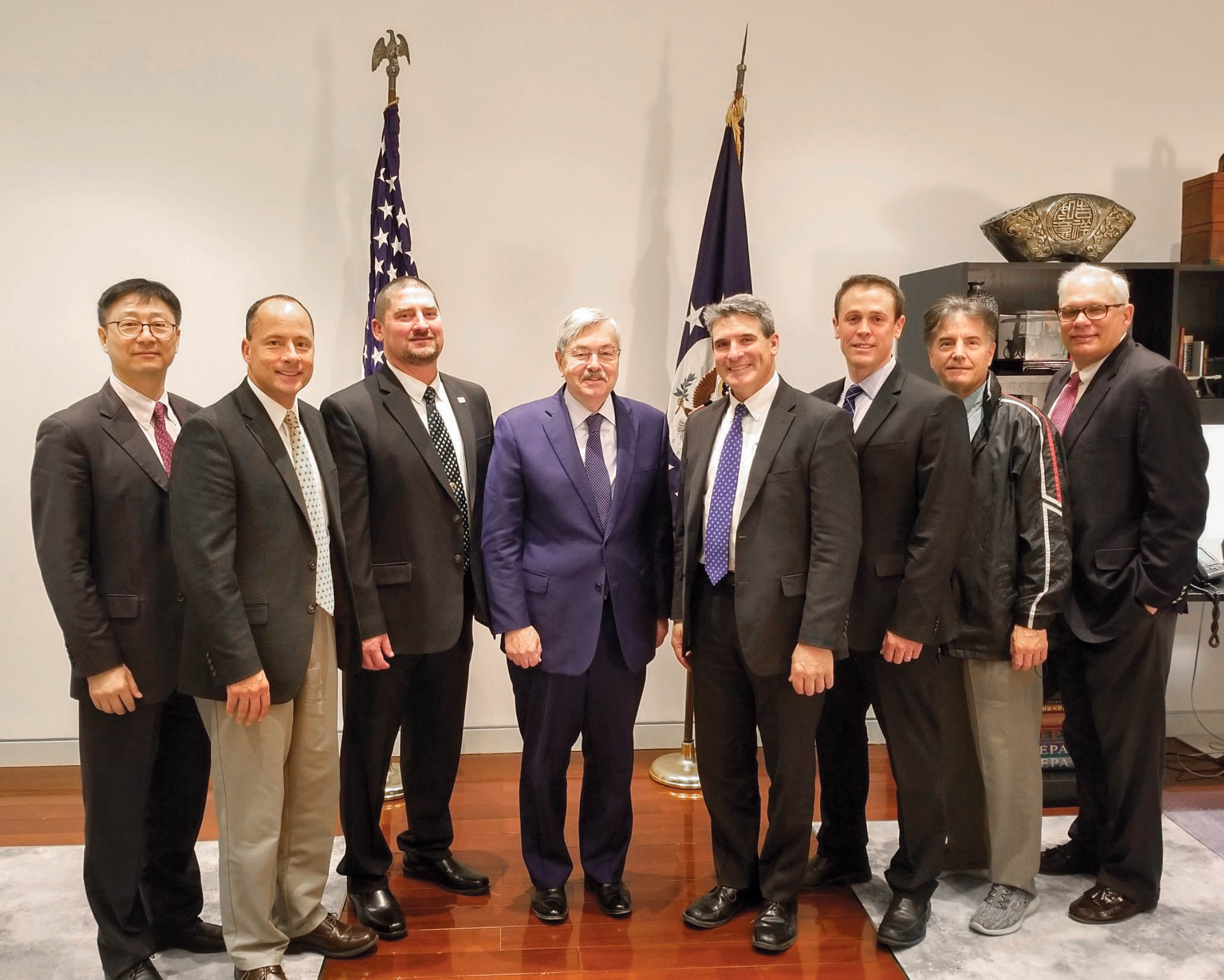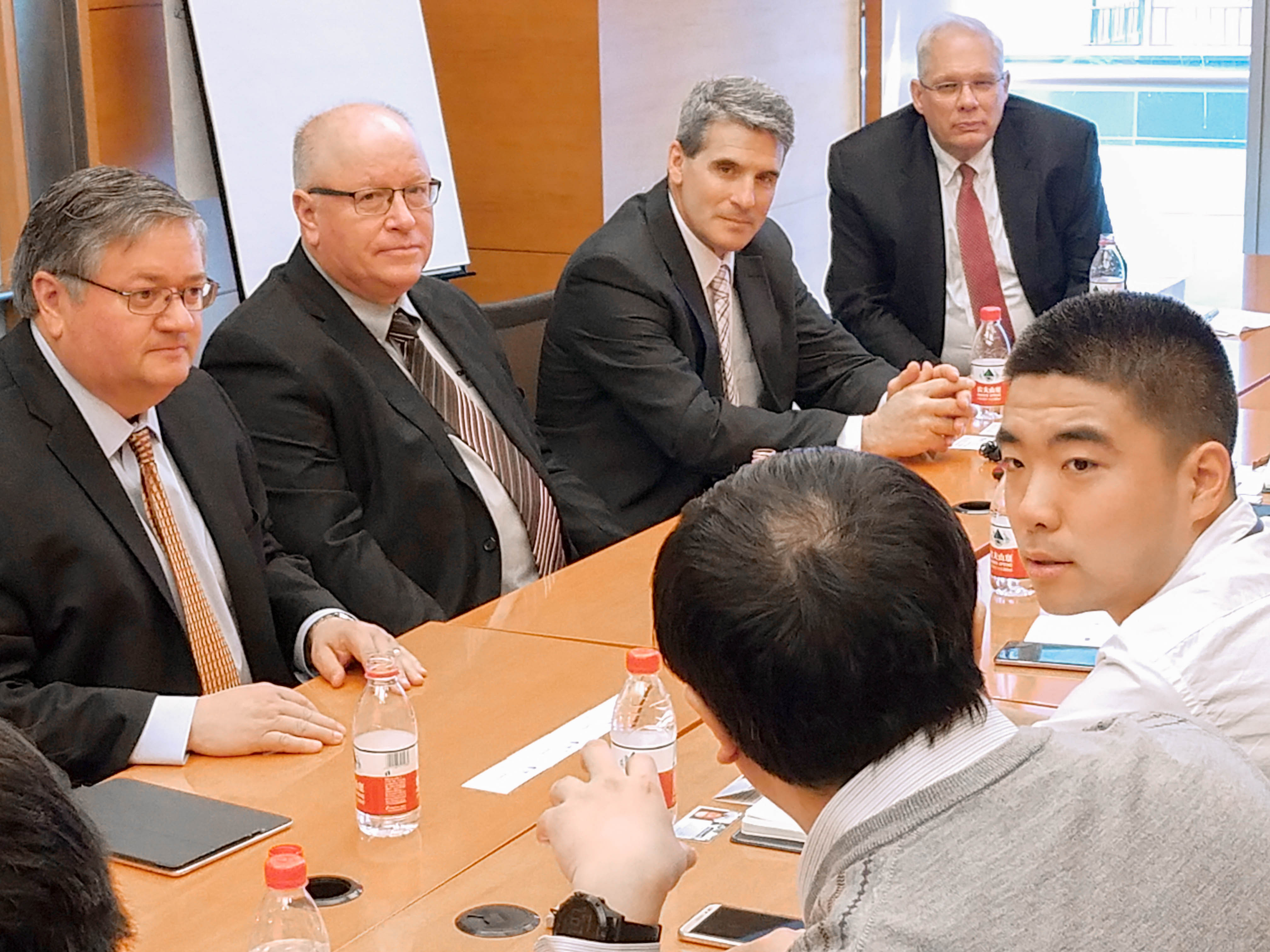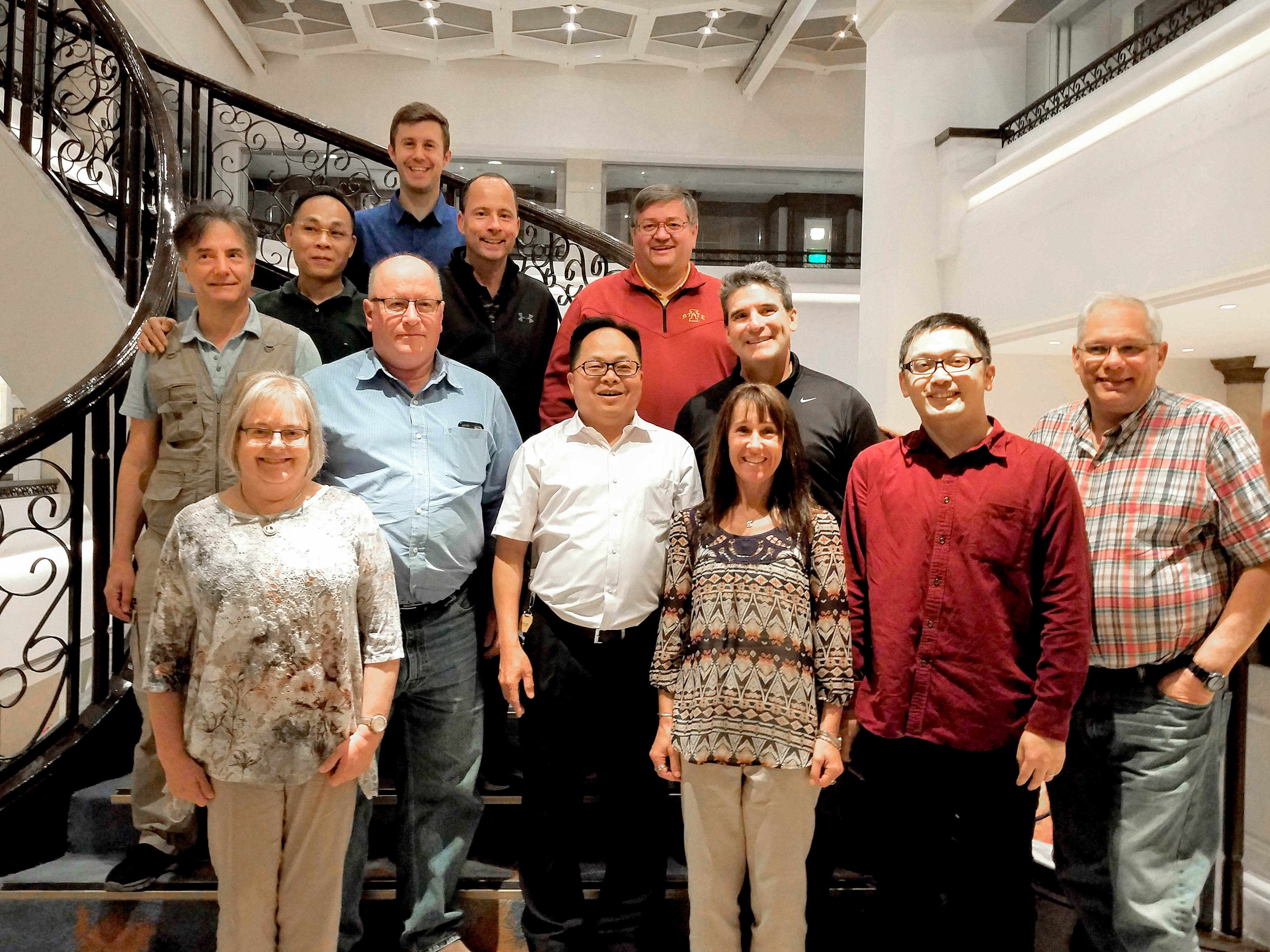Mishek makes lasting impact on the success of U.S. soy
September 27, 2022 | Aaron Putze, APR
Soybean production necessitates demand and vice-versa. Few have relished making the case (and sale) for U.S. soy more than Peter Mishek.
The consummate networker, relationship builder and soybean trader has devoted more than three decades of service to the soybean industry. In 1996, he founded Mishek Inc., a soybean trade consulting company. After a stint with Ag Processing, Inc. (AGP), he managed projects with farmer-owned cooperative, the Iowa Soybean Association (ISA) and other industry stakeholders.
His merchandising and consulting efforts have built preference and purchases of U.S. soy. During Mishek’s time pounding the pavement and crisscrossing the globe, Iowa production of the oilseed has increased by nearly one-third (from around 400 million bushels to a record 622 million in 2021), a trend mirrored nationally.
Coincidence? No.
Mishek’s passion for serving soybean farmers, processors and buyers has played an important role in the industry’s growth and success.
Along the way, he’s visited more than 57 countries, spent countless hours at 35,000 feet, accompanied hundreds of farmer-led trade delegations and ridden in tour buses on more pothole-filled roads than he cares to count.
Later this year, Mishek will retire from his role. “When the executives you meet on trade missions are the age of your kids, you know it’s time to get out of the way and let others lead,” he says.
During a recent meeting of the ISA board of directors, where Mishek provided an update on global marketing efforts, I sat down with Mishek and harvested his opinions on a variety of topics.

Peter Mishek, far right, took part in a ISA China trade mission with ISA directors, soy industry representatives and Ambassador Branstad in March 2019.
What project are you most proud of?
Being part of the team establishing Port of Grays Harbor in Aberdeen, Washington, as a major export terminal for U.S. soybeans. It positions the whole industry well for decades to come.
What was the catalyst for Port of Grays Harbor?
In 2002, AGP began exploring the idea of shipping soybean meal from Iowa and the Upper Midwest off the West Coast. We were told it couldn’t be done. Our collective reply was, “OK, we’ll do it.” We immediately focused on building a sales network overseas and a West Coast supply chain. In 2003, we began bringing farmers from Iowa and the Midwest to the Philippines to better understand the need and opportunities for U.S. soy.
What establish the Pacific Northwest as a major export terminal?
Customers in the Philippines were buying wheat from the Pacific Northwest. We asked, “If they’re importing wheat from the Pacific Northwest, why can’t they bring in soybean meal?”
We proposed the idea to our Filipino colleagues and, in 2003, loaded our first vessel. Buyers quickly understood the quality of U.S. soy and how it enhanced feed values. We worked tirelessly to ship soybean meal to the Australians who had strict phytosanitary requirements that bigger ports were unable or unwilling to meet.
What upgrades were made to Port of Grays Harbor to make it viable?
The facility was good, but the port was underutilized and all but abandoned when timber exports dropped off a cliff. We became aware of it while working with a short line railroad that served the harbor. After some initial conversations with harbor leaders, who were great promoters, it was obvious they were eager for AGP to construct a more modern and usable facility. We built out the loading and storage, and they expanded the rail capacity. Together, we continued to make upgrades to serve a growing number of customers.

What role did the soybean checkoff play in establishing this critical export hub?
It enabled us to conduct the necessary feasibility studies and build relationships and familiarity about the supply chain with key importers and buyers. We were also able to host regular visits to our farm production areas, shipping facilities and our port from our overseas customers, including representatives of the pork industry, feed mills and layer facilities. It took a dedicated team effort.
In what way?
Just like farmers must sow seeds every year to harvest a crop, we must visit customers every year and continually build and nurture relationships. That’s because year over year, relationships evolve as people change roles and markets evolve. Keeping our trade relationships strong in both good and bad times is a must. We’ve maintained and grown market share over the years because of the sustained investment of stakeholders like ISA, AGP and soybean farmers.
What metric do you point to in making the case for Grays Harbor?
In my 25 years of working on the project, Iowa went from being the third-largest soybean meal producer to number one. Grays Harbor makes us the west agricultural coast of the U.S. and the closest and largest single soybean meal shipper to Asia. It’s a supply chain that producers, their cooperatives, the rail company, AGP and Asian customers have built together.
How will this position be important moving forward?
It’s a crucial market as soy processing capacity increases and takes on greater value. I’m not implying that the export of whole beans is bad, but with the growth of biodiesel demand, we’re going to see severe pressure on whole bean exports and a necessary expansion in soybean meal exports.

After logging more than three decades of service to the soybean industry and visiting more than 57 countries, Mishek will soon embark on his next journey: retirement.
How will this shift impact Iowa?
Iowa will remain a leader in soybean processing and value-added by producing meal for meat, milk and eggs. Energy in China is three times more expensive than the U.S. and water is much more precious. Therefore, there are many price pressures on overseas crushing margins given the costs are much higher. It’s not bad for customers to get inexpensive soybean meal, so long as it’s from our supply chain.
What can the soybean industry do better in our efforts to promote U.S. soy?
Explaining the nutritional and amino acid composition of the soybean. Feed mills aren’t formulating on crude protein but rather on amino acids. They’re trying to lower pollution and be sustainable by limiting crude protein in the finished feed product. So, our focus should be there. Soy is a better source of essential amino acids rather than synthetics, especially the four that matter most. Soy also contributes about 20% of the energy that’s needed in a feed ration. We produce the best soybeans, and it’s a real advantage we should promote.
What will you do in retirement?
Whatever I want!
Any parting advice for soybean farmers and leaders?
Focus on understanding your customers’ goals. Figure out what they need and how you can get them what they need at the best price from our fields. Soybeans are still their best option and the one and only miracle crop.
Back